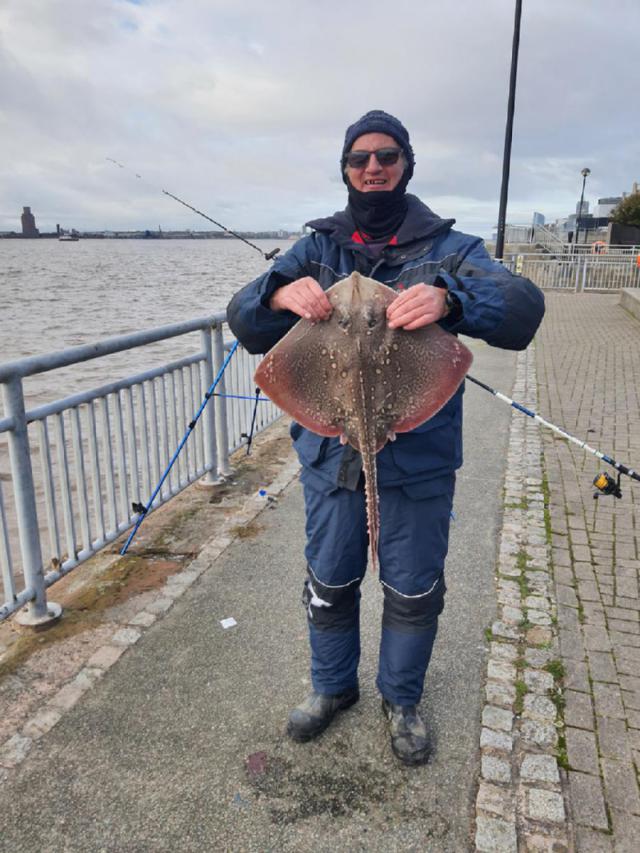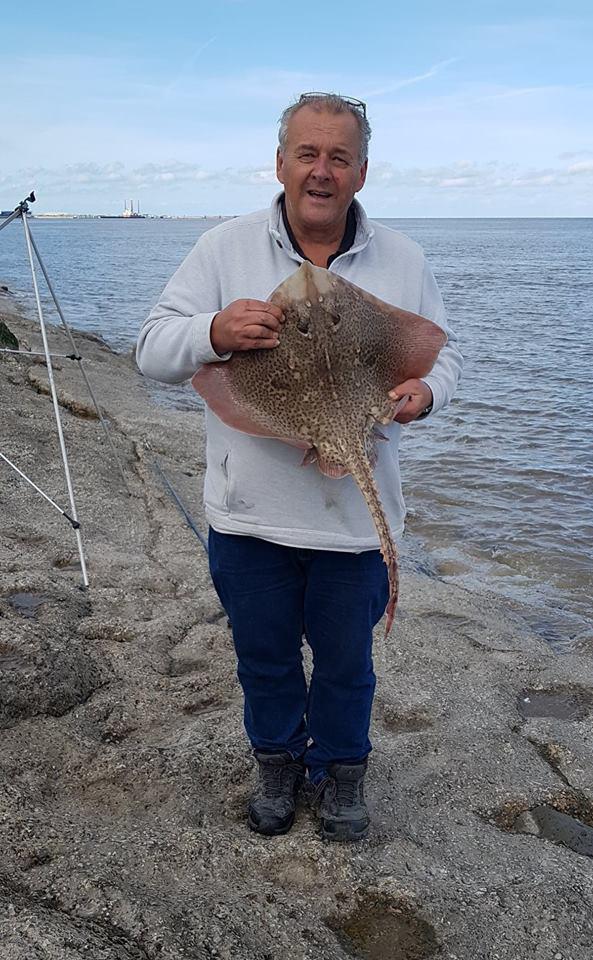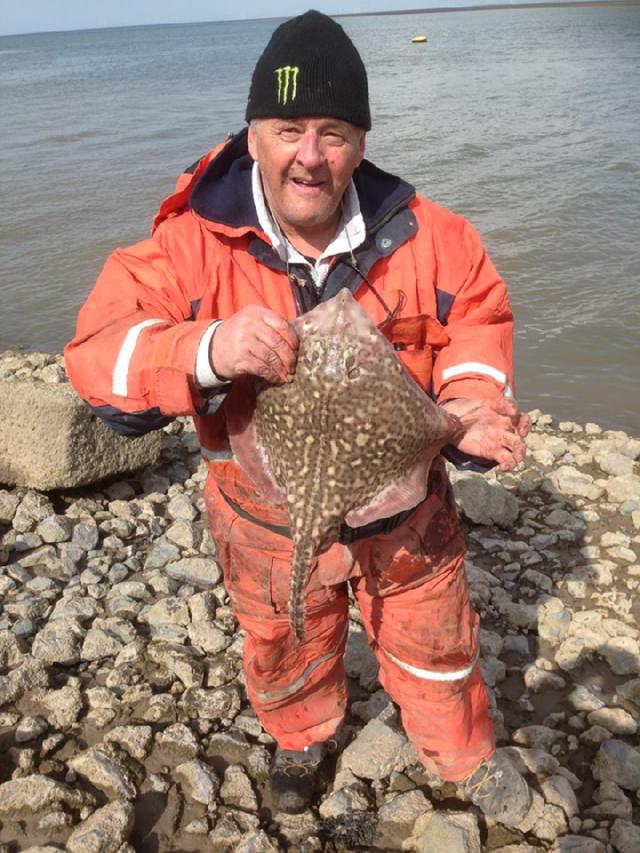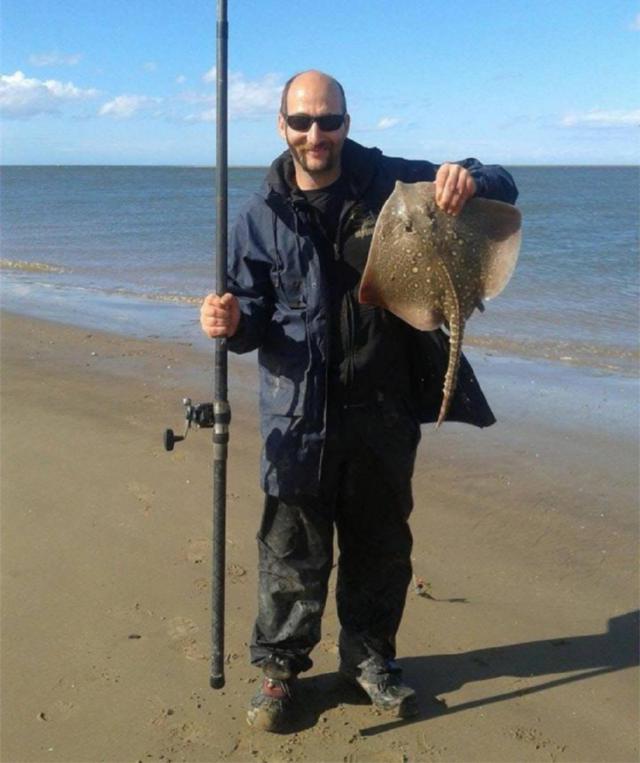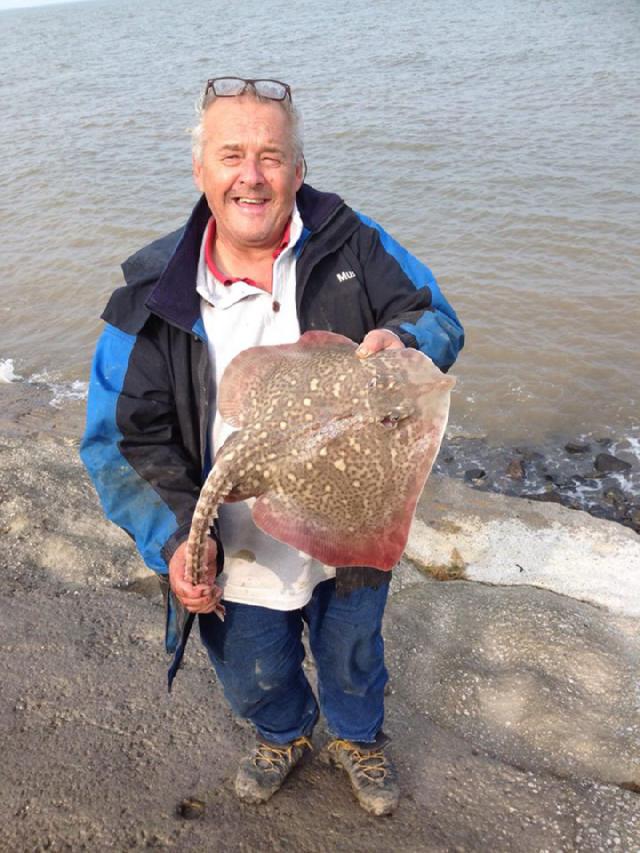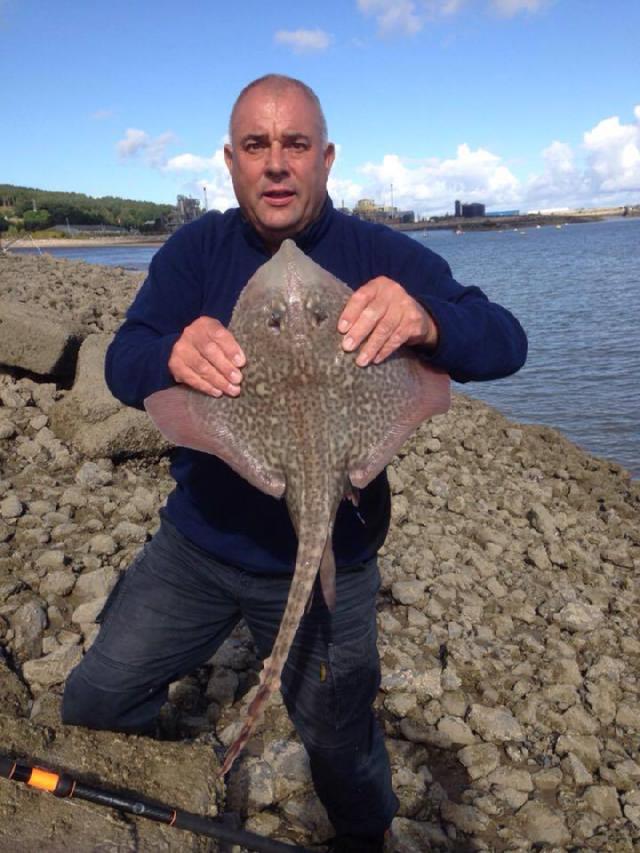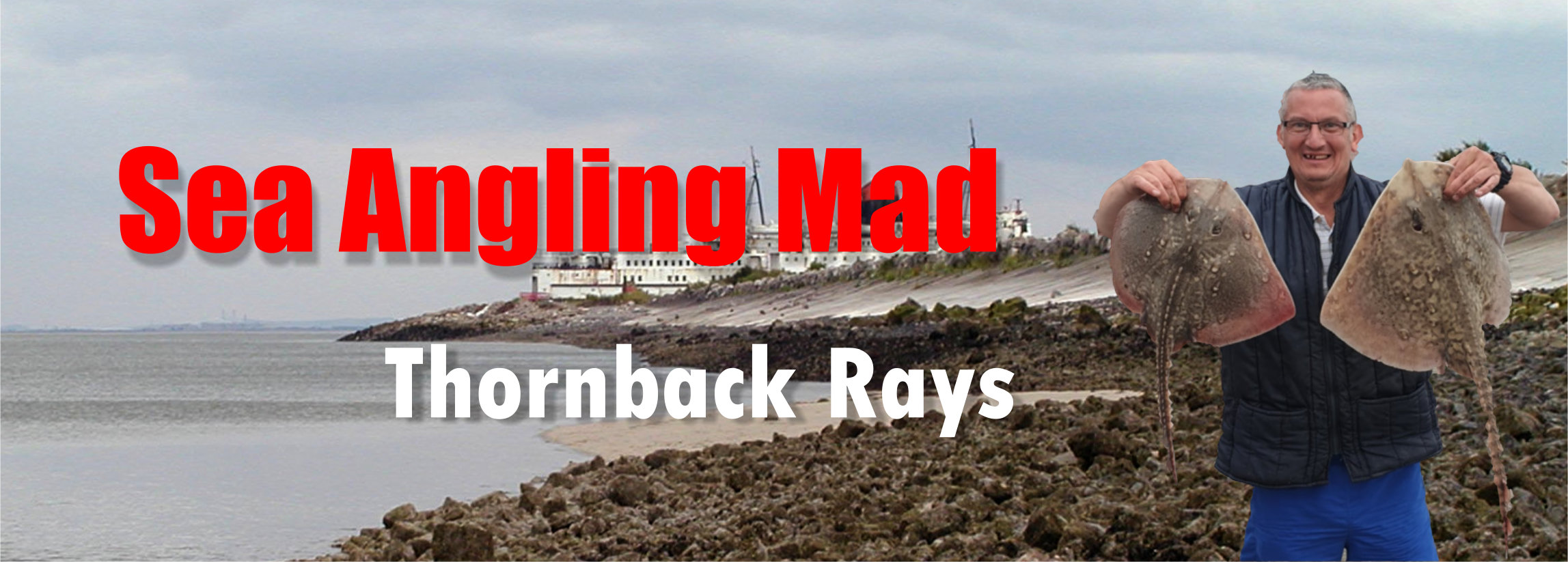
Thornback Ray
Last Updated September 2022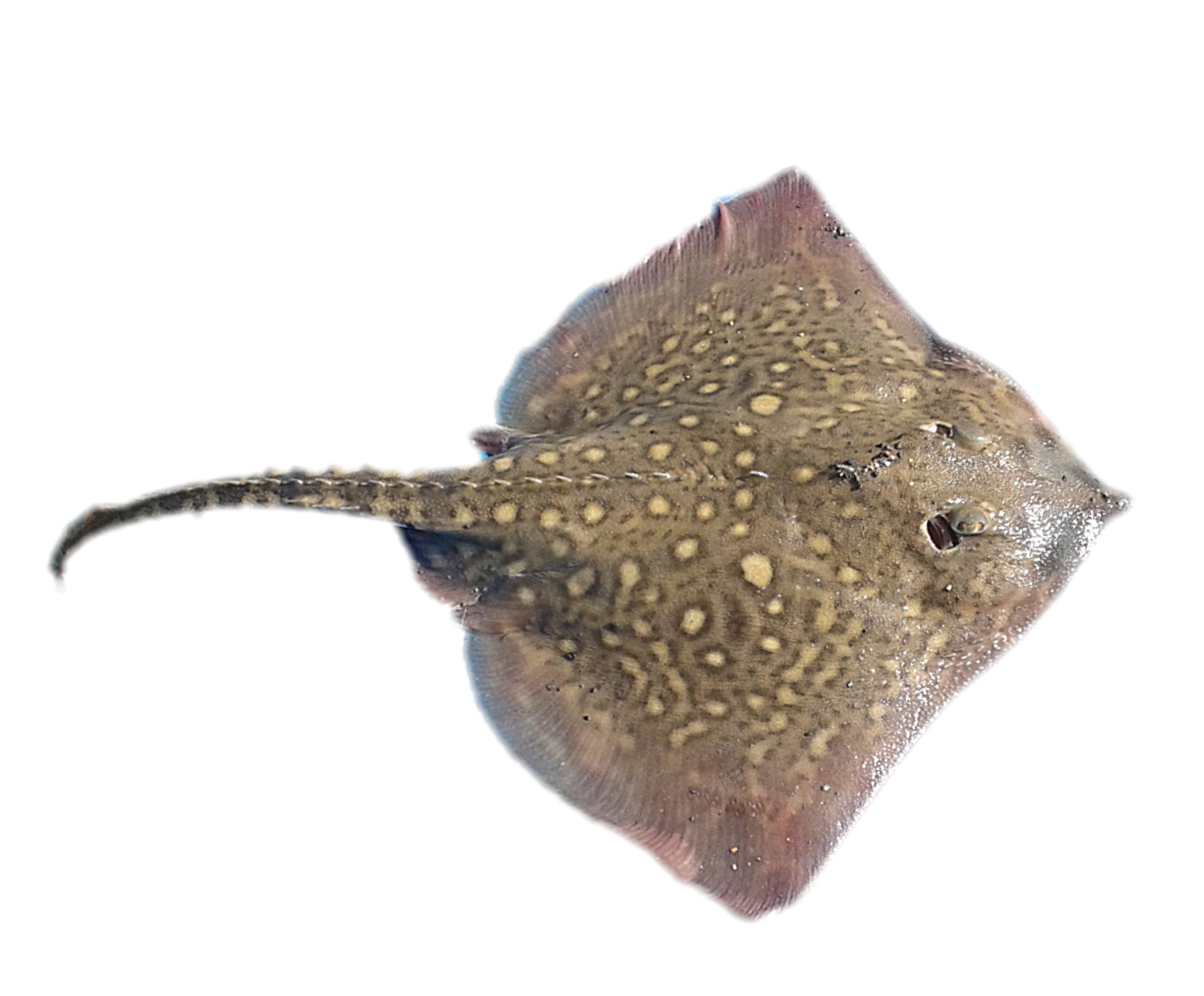
The Thornback Ray is another species that seems to enjoying a resurgence in recent years. They are now cropping up more frequently in catches and in a wider range of venues. This is good news for anglers as it opens up the chances of catching fairly large fish from the shore.
Rays begin to turn up in catches in spring as early as February. Most people will start to target them from mid March onwards through to October.Rays can be caught from rock marks, beaches and in some of the larger estuaries such as the Thames, The Mersey, The Bristol Channel and the Dee.
If rays are feeding in front of you they're not difficult to catch. They can be caught using a number of different baits but the most successful ones are:-•Frozen Sand eels:- A prime bait which works well from almost any mark. Used either singular or 2 eels wrapped in elastic on a pennel rig.
Ray bites are generally positive pulls which will often result in the road being pulled horizontal in the rest. Occasionally the bites will be shy almost as if small fish are tearing at the bait. These types of bite are usually followed by the hard pull over as the fish having eaten the bait then starts to swim off. When handling a Ray you need to be careful of the thorny spikes and at the business end the mouth. Although they're members of the shark family they're not too toothy but they have powerful crushing pads in their mouths. These can give a powerful crushing bite. Just listen to the noise their small teeth and jaws make on your pliers as they chomp down on them while your trying to unhook them.
When handling a ray try and pick it in it’s cheek and support the fish by any other area where it’s devoid of spikes . . . edges of the wing or the tip of the tail are usually safe bets. Don’t worry Thornbacks don’t have a sting or a sharp barb on their tail!
Each mark will vary as to the best times to fish for rays. Many people will fish almost exclusively over the LW period especially so from sandy beaches and on a fairly big tide. The belief is this offers the best chance of reaching the zone where there is always a depth of water i.e. you’ll be casting into the zone below the LW mark. While there will always be exceptions to the rule a lot of fish are caught over the LW period. So look at reports for marks in advance see if a pattern emerges indicating the best times to fish on those venues.Most people practice catch and release when fishing for rays. A few people will tell you the wings are good eating. I personally always return rays.
There's something almost alien about the way they look. This is probably why the commercial boats don't really bother with them these days as most people would be put off buying one just by its looks.
Last Updated September 2022

The Thornback Ray is another species that seems to enjoying a resurgence in recent years. They are now cropping up more frequently in catches and in a wider range of venues. This is good news for anglers as it opens up the chances of catching fairly large fish from the shore.
Rays begin to turn up in catches in spring as early as February. Most people will start to target them from mid March onwards through to October.Rays can be caught from rock marks, beaches and in some of the larger estuaries such as the Thames, The Mersey, The Bristol Channel and the Dee.
If rays are feeding in front of you they're not difficult to catch. They can be caught using a number of different baits but the most successful ones are:-•Frozen Sand eels:- A prime bait which works well from almost any mark. Used either singular or 2 eels wrapped in elastic on a pennel rig.
- Squid:- Probably the most used of all baits for rays. Can be used alone or as a wrapping bait for mackerel, sand eel, prawn or crab.
- Peeler Crab:- A great bait for rays on estuary marks. The rays at these marks are there for the crabs! It sometimes seems as if they only have eyes for crabs on this type of venue.
- Prawns:- Another bait which seems better suited to fish being targeted in estuaries.
- Mackerel:- This is often the choice bait when fishing beach marks during summer evenings when the mackerel shoals are about.
- Bluey:- Is rapidly becoming the top ray bait. Used in the same way you’d use mackerel. probably better in a wrap as it’s not as tough as mackerel.
- Herring:- This is often the choice bait when fishing from boats especially early in the year.
Ray bites are generally positive pulls which will often result in the road being pulled horizontal in the rest. Occasionally the bites will be shy almost as if small fish are tearing at the bait. These types of bite are usually followed by the hard pull over as the fish having eaten the bait then starts to swim off. When handling a Ray you need to be careful of the thorny spikes and at the business end the mouth. Although they're members of the shark family they're not too toothy but they have powerful crushing pads in their mouths. These can give a powerful crushing bite. Just listen to the noise their small teeth and jaws make on your pliers as they chomp down on them while your trying to unhook them.
When handling a ray try and pick it in it’s cheek and support the fish by any other area where it’s devoid of spikes . . . edges of the wing or the tip of the tail are usually safe bets. Don’t worry Thornbacks don’t have a sting or a sharp barb on their tail!
Each mark will vary as to the best times to fish for rays. Many people will fish almost exclusively over the LW period especially so from sandy beaches and on a fairly big tide. The belief is this offers the best chance of reaching the zone where there is always a depth of water i.e. you’ll be casting into the zone below the LW mark. While there will always be exceptions to the rule a lot of fish are caught over the LW period. So look at reports for marks in advance see if a pattern emerges indicating the best times to fish on those venues.Most people practice catch and release when fishing for rays. A few people will tell you the wings are good eating. I personally always return rays.
There's something almost alien about the way they look. This is probably why the commercial boats don't really bother with them these days as most people would be put off buying one just by its looks.
